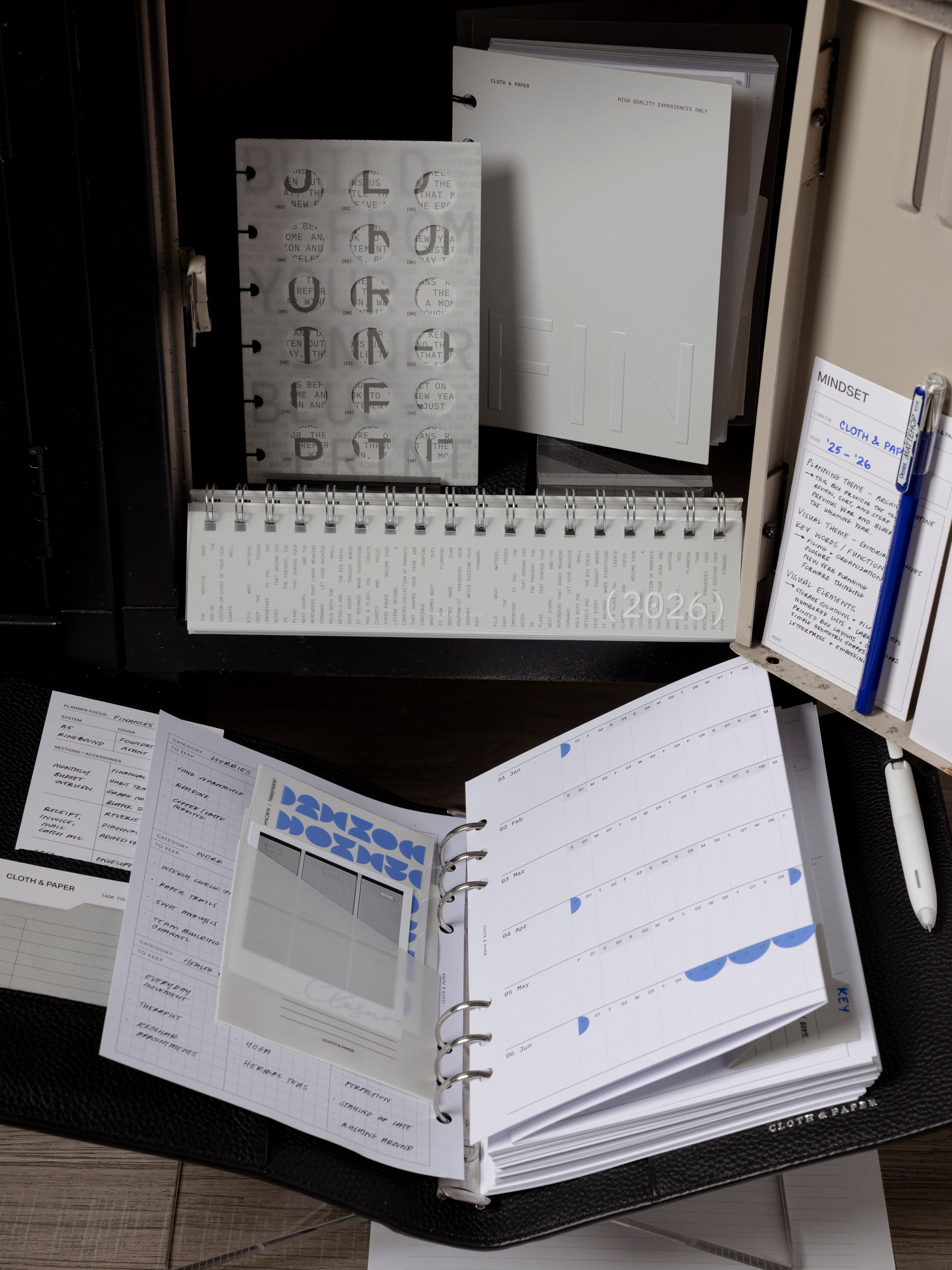Cultivating Self-Care In Your Planning
Practicing positive self-care is highly beneficial for mental and physical health, and cultivating self-care through planning is an excellent way to keep track of your journey. Cloth & Paper has curated a perfect selection of lifestyle inserts designed to help you craft an ideal self-care plan!
Use Our Inserts To...
Identify Stressors + Coping Habits
Identifying your most common stressors and how you manage them is an important aspect of creating a self-care plan. Our Arched Habit Tracker Planner Inserts are often used to track both of these points. As an example, you might track your most common stressors, such as a heavy workload or traffic, and your common coping habits, such as skipping physical exercise or watching extra TV. I find it beneficial to focus on stressors from each category: work life, emotional life, physical fitness, and relationships/community. List your stressors in the top three rows, and your corresponding stress management tactics within the bottom three rows. Our Arched Habit Tracker Sticky Notes | Angora are also useful for on-the-go tracking. For example, use one page for a stressor, the next page for your coping habit, and so forth. After tracking your habits for a month, use this information coupled with our habit trackers to start your new self-care plan!
Create a Self-Care Plan
The monthly habit trackers are perfect for both identifying old habits and creating new ones. Once you have data recorded of your stressors and coping habits, choose a positive habit to focus on that relates to them. For physical fitness goals, we recommend using our Arched Habit Tracker Sticky Notes to track your exercise and water intake. If one of your goals is to plan meals for the week and skip out on takeout, use our Daily Meal Plan Sticky Notes. If one of your stressors, such as a heavy coursework load, creates a coping habit such as skipping out on physical exercise, a positive habit goal might be taking a walk after work or eating healthier. Once you have a goal in mind, record it under that month’s tracking. Then, follow up in the notes section for reflection and re-evaluation.
Reflect, Re-evaluate, Restructure
Remember, self-care is personal and will look different to everyone. If your new self-care plan isn’t working for you, a restructure may be needed. Reflect on your past recorded habits, and adjust as needed. My favorite recommendation is using the Journaling Inserts during the reflection process -- record what works, what doesn’t, how you feel about your progress, and what might be hindering progress. Commit to your new habit for at least three weeks before deciding to restructure. If your self-care is not working for you, return to the identification process. Using the earlier example of lack of physical exercise, maybe taking a walk after work does not work well due to timing. A realistic adjustment would be taking a walk during your break rather than after work, or blocking off a portion of time on your day off for exercise instead. It may take a few tries to create the best self-care plan for yourself, so don’t get discouraged -- the positivity and betterment is worth the effort. Above all, we recommend cultivating a plan that is meaningful to you.
You Might Also Enjoy
2 UNIQUE WAYS TO EXPLORE JOURNALING IN YOUR PLANNING
MINDFUL JOURNALING WITH CLOTH & PAPER
ADDING MINDFULNESS TO YOUR PLANNING WITH THE SEPTEMBER SUB BOX
RECIPE & MEAL PLANNING WITH C&P
Join our Newsletter for 15% off of your first purchase and more planning tips like these – right to your inbox! Additionally, for personalized help, schedule a Planner Consultation with one of our experts. They’ll help evaluate your planning needs and provide an in-depth analysis and personalized product guide to help elevate your planning process.






Leave a comment
This site is protected by hCaptcha and the hCaptcha Privacy Policy and Terms of Service apply.